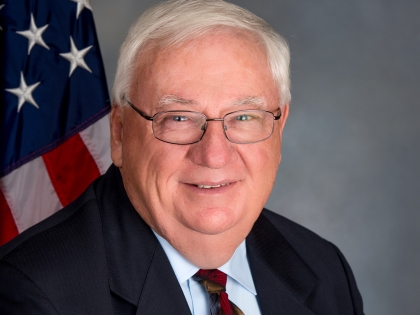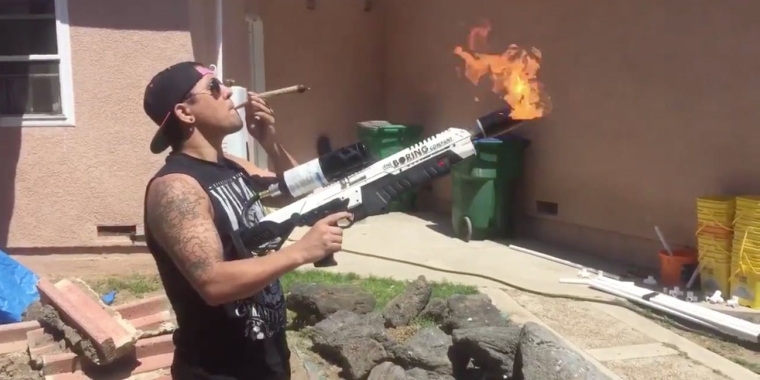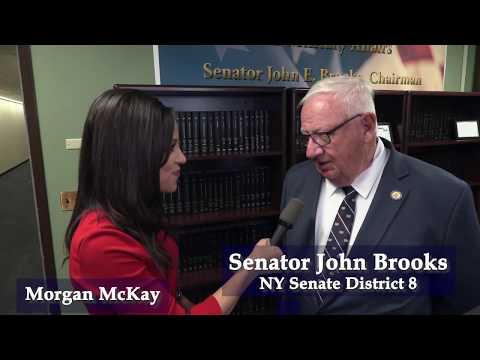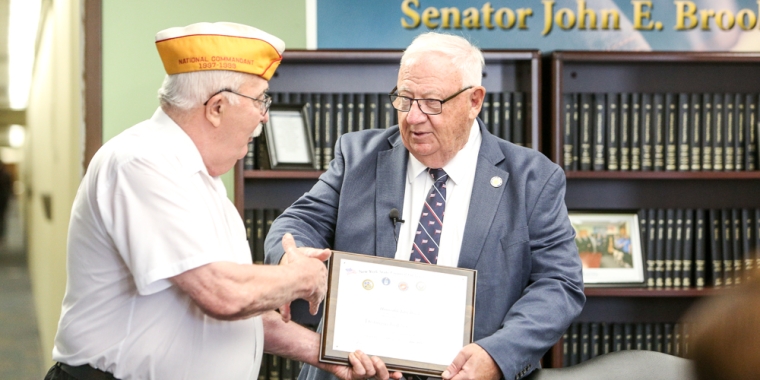
South Shore Does Well In State of State

Nassau County residents, and especially those along the South Shore, will find much for them in the proposals that Gov. Andrew Cuomo put forth in his Jan. 8 State of the State address, provided they are included in the state budget later this year.
Wantagh and Seaford commuters will benefit from large-scale upgrades to the Pennsylvania Station complex and the Long Island Rail Road. Residents along the South Shore who saw their properties damaged and destroyed by Tropical Storm Irene in 2011 and Superstorm Sandy in 2012 will see investments in new reefs to help control flooding. And environmentalists and commercial and sport fishermen will gain with the refurbishment of shellfish beds and sport fishing stocks. Along the way, the governor also promised new hate crime legislation, greater protection for women and a solution to the region’s high property taxes, as well as relief for small business owners and a second run at legalizing recreational marijuana use for adults.
Now Cuomo and the Democratic majority in the State Legislature must find a way to pay for his proposals.
The “Restore Mother Nature” bond act, with a $3 billion price tag, is in many ways the easiest, since it is to be paid for through borrowing. The plan will create four new reefs to help control flooding, as well as add 200 million shellfish to depleted beds along the Atlantic coast. And sport fishing stocks are to be replenished under the plan, and flood plains and barriers are to be fortified.
“It’s really an example of smart growth,” State Sen. John Brooks, a Democrat from Seaford, said. “Two of the reefs are already in place — I was there when they sank the first one,” he said. “They used pieces of the old Tappan Zee Bridge, so what would have been rubble ended up being put to good use.”
Mass transit is another matter. “I don’t see how the governor plans to pay for tens of billions of dollars in construction with a $6 billion deficit,” State Assemblyman Dave McDonough, a North Merrick Republican, said. “And I don’t really see [New York City Mayor Bill] DeBlasio being too thrilled about a state development project with PILOTs [payment in lieu of taxes] in the middle of his city.”
The governor’s proposal for the railroad includes many of the same components that have been featured in earlier addresses. In addition to converting the old U.S. Post Office building on Eighth Avenue into the Daniel P. Moynihan Train Hall — itself a $1.6 billion project — the governor would add significant track space to reduce congestion and boost capacity.
The problem is that the area is already built out, according to transportation advocate and former federal rail official Larry Penner, of Great Neck. “Trains don’t have enough room to turn around now. There’s no place to put more platforms or more track.” But even if it were possible to add more track and trains, conditions would still not improve, because “the tunnels that run under the East River are in a disastrous state of repair,” he said.
Four tunnels run under the river, Penner said. Only two are functional under optimal conditions, but with heavy rains, one of the tunnels floods. Thus, every train going into or out of Manhattan must use a single tunnel. “I don’t see any way to add the 40 percent of capacity Cuomo talks about until he fixes the tunnels,” he said.
Some of the revenue for the governor’s projects could come from a tax on the sale of recreational cannabis. “We’ve been looking at this for a while,” Brooks said. “When we were talking about it last year, we invited some people from the states that have already been through the process to come and share their experiences with us.”
Brooks was frank about his lack of enthusiasm for legalization, despite the floodgate of revenue it might open, and McDonough opposes any efforts at legalization. But “it looks like it’s going to happen,” Brooks said. “And if we’re going to do it, I want to see us do it right.” One of the stumbling blocks involves field testing potentially impaired drivers, since nothing exists at present that is comparable to a field sobriety test for alcohol.
The measure died last year in the waning hours of budget negotiations, but with billions in potential revenue on the line, rising taxes and no end to the state and local tax cap in sight, the State Legislature might find it has more appetite for legalization in the current session.
The state will also again take up the issue of school funding and property taxes, Brooks said.
“We see school districts that spend $36,000 per pupil,” Cuomo said in his speech. “And we see others that spend $13,000. There is no way students facing those disparities receive the same opportunities.”
Nassau County’s Democratic senators met late last year in Seaford to listen to local stakeholders’ proposals and concerns as the state considers assuming responsibility for two Long Island school districts beset by funding difficulties and looks at the inequities that face many more.
In the coming weeks, the governor and the Legislature will begin to craft a preliminary budget, McDonough said. “The governor will probably have that by the end of the month.” Then the road shows will begin, at which he will make his case to residents as various experts and stakeholders troop up to Albany to lobby for their projects.
“People around Albany are saying things like, ‘Holy Moses,’” when they hear the governor’s ambitious plans, Brooks said in an allusion to building titan Robert Moses, who was largely responsible for many of New York’s most iconic landmarks. “But you know, the subways, the bridges — all those projects that they built at the beginning of the last century — lasted a hundred years and prepared us to become what we are now. So maybe by investing in this infrastructure, the airports and roads and trains, we’re preparing for the next hundred years.”



